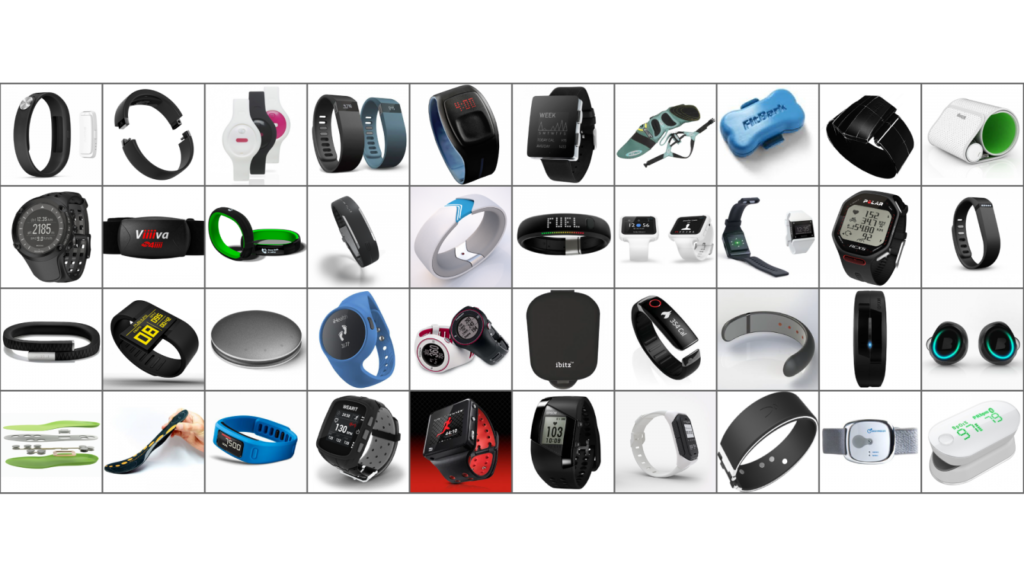10,000 Steps to IoT in Health Care
 I see many people on campus with electronic wristbands from Fitbit, Polar, Samsung, Garmin, the Apple Watch, or something similar. A commonly held goal for people with such a fitness gadget is to get the step count over 10,000 daily.
I see many people on campus with electronic wristbands from Fitbit, Polar, Samsung, Garmin, the Apple Watch, or something similar. A commonly held goal for people with such a fitness gadget is to get the step count over 10,000 daily.
But these electronic wristbands have multiple functions other than just being a step counter. The built-in sensors allow for calculation of the acceleration, the heartrate of the wearer, count the calories burnt, or even track the sleep of the user. The apps on the smartphone are collecting these data points and reveal the statistics of the user. Thus, these wearables are a growing element of the dynamic capabilities such tracking and internet connected devices purpose. And as such an element of IoT.
From recreation to research to medicine
The data gathered by those wearable electronic devices prove to be a trove for scientist in the healthcare sector. Eric Schad, founding director of the Icahn Institute for Genomics and Multiscale Biology at Mount Sinai Health System notes in an interview with McKinsey & Co. that fitness trackers today are mainly used as for recreational purposes. However, more and more the data is used for research and Schad predicts that eventually the data gathered will used in clinical practice [1].
“Wearable devices and engagement through mobile health apps represent the future—not just of the research of diseases, but of medicine.”
Eric Schad, founding director of the Mount Sinai Health System, NY
The fitness data collected provide a longitudinal monitoring of the state of the wearer. A more accurate profile of who the user is results from the data. Deviations from the “normal” state may prevent the wearer from sliding into a disease.
Prevention and Monitoring
The simple example mentioned earlier shows how the healthcare industry can apply wearables as a tool for medical prevention. Furthermore, specialist can extensively perform reconnaissance through extensive use of such gadgets, especially in monitoring patients.
As sensors and technology improves more and more applications will be possible. Like a body monitoring for people with chronic diseases. Here the wearable could trigger an automatic alarm informing health care providers if the patient’s condition deteriorates significantly. [2] Jonas Kundsen, IDC Health Insight list in his analysis “Business Strategy: Internet of Things for Healthcare” numerous other monitoring examples such as wearable devices that provide assisted living for elderly people or people with disabilities.
Better, more efficient service at a lower cost that is the potential gain for the use in such wearables that provide crucial data to health care provider. [3]
Data Security
Before large scale implementation of such applications, the healthcare providers working with such elements of IoT have to establish sound governance regarding how to handle the vast amount of data that is being produced. Thereby questions about standardisation, access and privacy protection are yet to be answered.
Thus, great opportunities will be encountered (analysts believe the wearables market will grow to $150 billion a year till 2027 [4]) while concerns about safety of private data will grow.
10,000 steps per day: it is a personal goal to keep us healthy. The goal for the healthcare industry as a whole is to utilize the data from our Fitbits, smartwatches or other wearable devices to provide better service without disregarding our privacy.
References
[1] E Schad (2015), founding director of the Icahn Institute for Genomics and Multiscale Biology at Mount Sinai Health System, New York. Interview with McKinsey & Co.
[2] J Kundsen (2016), IDC Health Insights, “Business Strategy: Internet of Things for Healthcare: European Market Overview”.
[3] S PiaI (2014), IDC Health Insights, “Big Data and Analytics Trends in the European Healthcare Market: An IDC Health Insights Survey”
[4] J Hayward (2017), IDTechEx “Wearable Technology 2017-2027: Markets, Players, Forecasts”.
One comment on “10,000 Steps to IoT in Health Care”
Comments are closed.



Thank you for an interesting post about IoT in healthcare!
It’s definitely true that IoT, machine learning and data analytics will continue expanding, especially in the healthcare sector. Another interesting application area for the information gathered using different wearables is personalized medicine and disease prediction, as discussed in this article [1].
Zheng J et al. Emerging Wearable Medical Devices Towards Personalized Healthcare. Proceedings of the 8th International Conference on Body Area Networks, 2013. Available: https://www.researchgate.net/publication/262244638_Emerging_Wearable_Medical_Devices_towards_Personalized_Healthcare